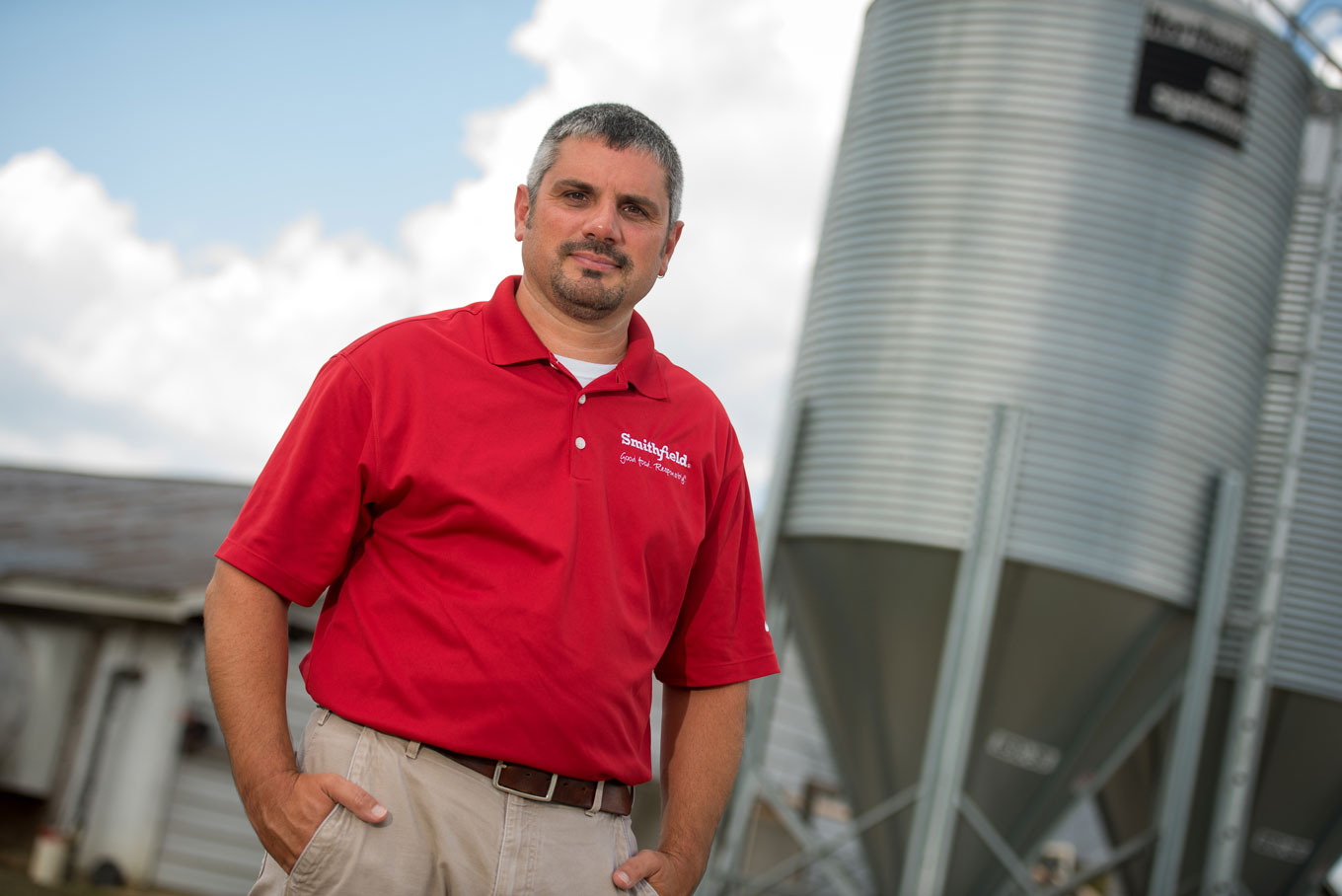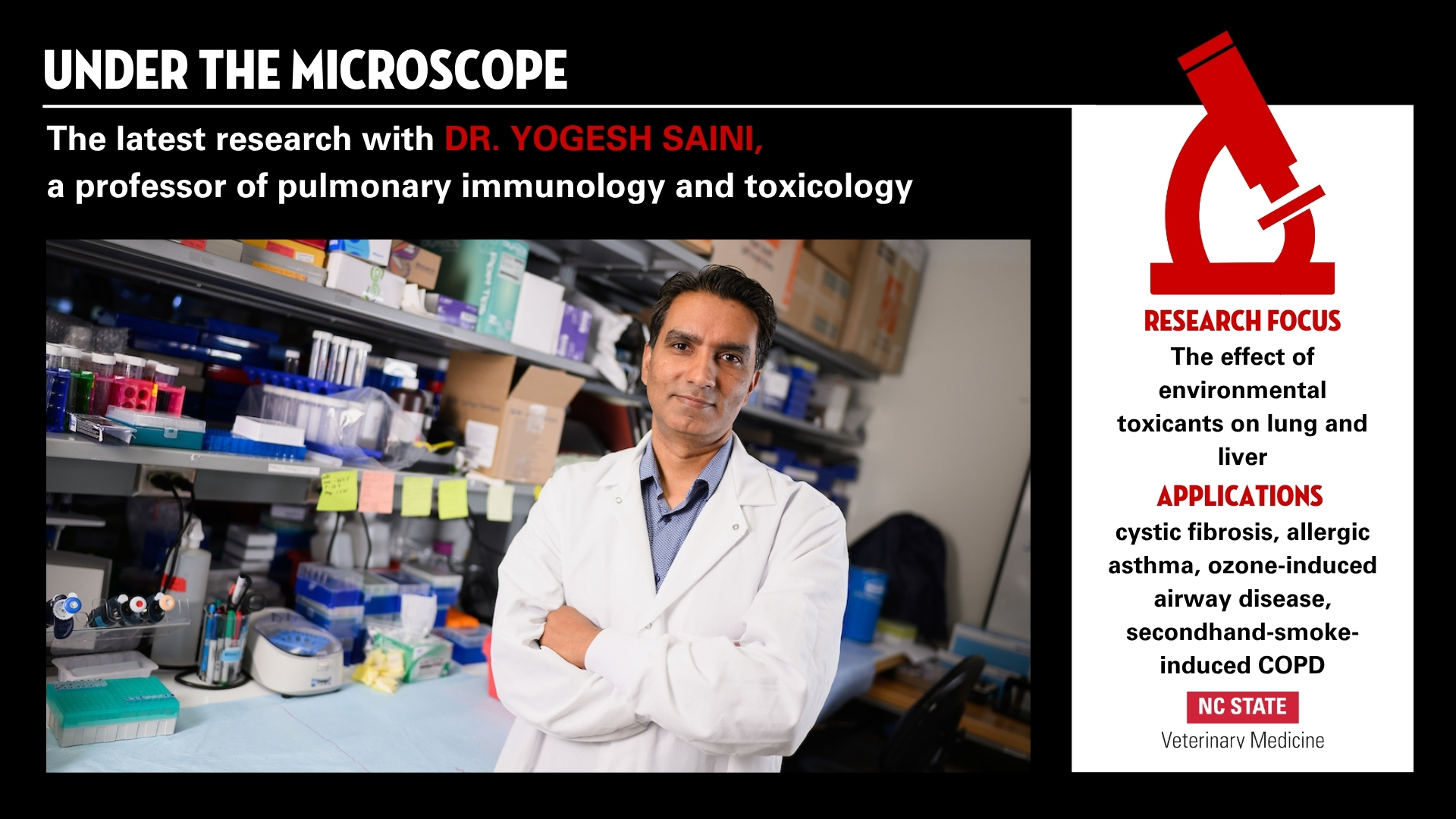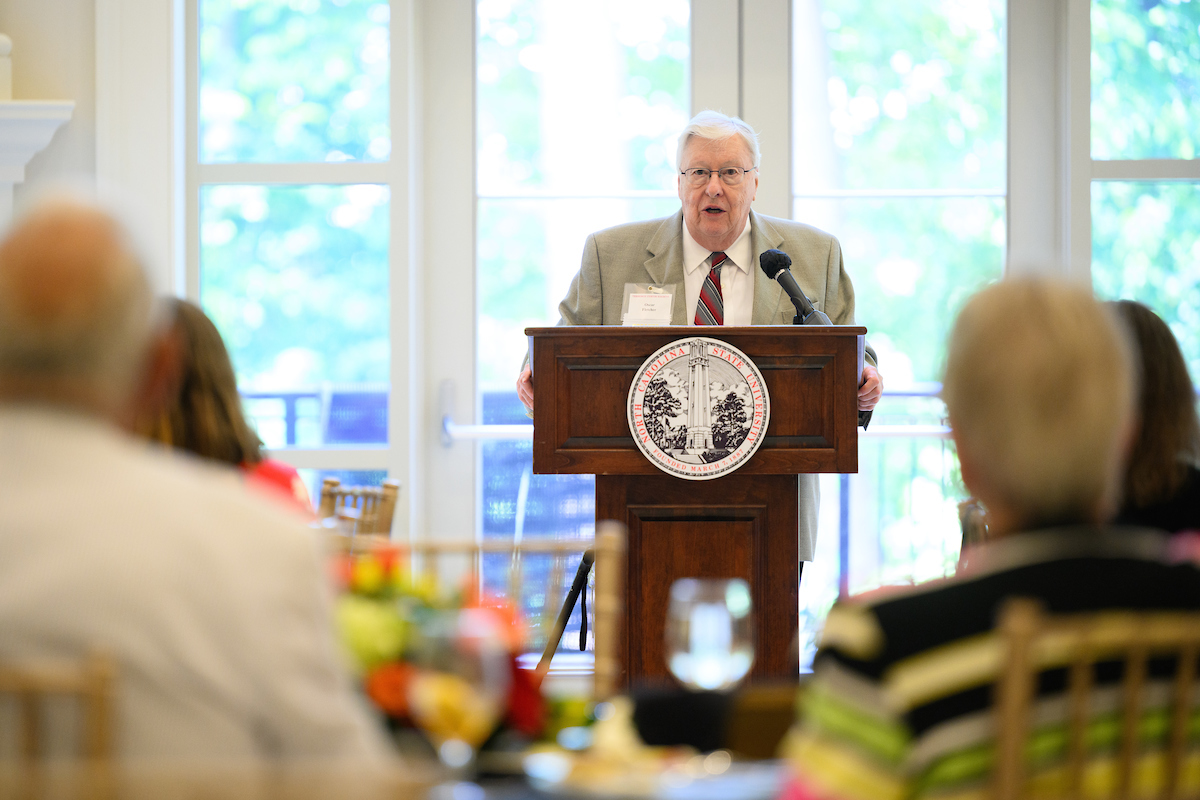An Unexpected Journey in Swine Medicine

Before you can see Dr. Jeremy Pittman’s pigs, you need to get clean.
And before you get clean, everything with you needs to get clean, too. Your cell phone, your camera, your keys — anything at all. You need to scrub everything you’re taking in with sanitizing wipes.
And then they need some information: Your name and where you’ve been today and where you’ve been yesterday and where you’ve been the day before that.
Have you been in contact with any hogs?
No? Now you may disrobe and shower. You’re told to go into one of three shower stalls, which is divided into three areas. The first is where you hang your clothes, the second is where you actually shower. They provide a liquid hair and body soap as well as nail scrubbers (which you must use).
The third is where you get dressed. But not back in your own clothes. You must choose underwear (boxers or briefs), a short-sleeve shirt and white tube socks. No pants. Then a white coverall. Then you get sized for big rubber boots into which you tuck your coveralls. In your pockets go protective eyewear and earplugs (just in case it gets too noisy).
Then you can see Dr. Pittman’s pigs.
Pittman, a staff veterinarian at Smithfield, walks down to one of the units at the farm in Waverly, Va. part of a vast national complex. In this building, one of many on the property surrounded by tall, very green trees, a group of 14-week-old hogs are held, part of the 9,000 pigs on this farm and a fraction of the over 100,000 sows and their pigs spread over more than 300 farms that are under Pittman’s care in Smithfield’s Hog Production Division, North Region, covering North Carolina, Virginia and Pennsylvania.
About 20 or so hogs take up each pen, which run a dozen deep on both sides. The smell is strong, but not unbearable. On this humid summer day, dozens of fans roar as hogs sleep, drink from dangling hoses or eat manufactured feed.
[pullquote color=”orange”]“You know the engineering part of swine medicine I was talking about liking?” he asks. “This is it.”[/pullquote]
Pittman, who received his DVM in 2004 from the North Carolina State University College of Veterinary Medicine (CVM), eagerly points out the mechanics of it all: the ventilation system, the baffle placements, the food and water dispensing system. As he glances over a clipboard with records on the hogs, he mentions the flushing system. Every few minutes, a whoosh of water flows underneath the pens to clear waste.
“You know the engineering part of swine medicine I was talking about liking?” he asks. “This is it.”
He puts down the clipboard and surveys the hogs. Several curiously poke their snouts through the pen gates, sniffing Pittman’s legs.
He reaches out and, as though it was a pet dog, ruffles the forehead of a hog.
A Little Bit of Everything
Monitoring this farm is just one part of Pittman’s job (he estimates he’s here a few times a year, unless there are emergencies). About five miles down the road is another part.
From the road, it looks like a bank branch, but it is here, in one of Smithfield’s office buildings, where Pittman, 38, keeps track of his other work: research on vaccination and swine diseases, developing ever-changing health plans with a team, fielding emergency calls from farmers and planning summer programs with students, many from NC State. He also works closely with his division’s other veterinarian, Dr. Whitney Burton, a 2011 NC State CVM graduate based in Tarboro.

His office is like any other — except for all of the pigs. On a large bookshelf, dozens of pig figurines are scattered amongst science books and meticulously labeled binders. All shapes and sizes and colors of pigs surround a book titled, “The Science and Practice of Pig Production.” On the walls, next to diplomas and award plaques, are pig artwork and posters. One is a framed Time magazine cover anointing Miss Piggy the “Pig of the Year.” Pig figures are displayed in front of pictures of Pittman’s family.
It’s not so surprising to see this décor. This is a man who went to NC State’s CVM with an unwavering goal of becoming a swine veterinarian and took the job at Smithfield soon after graduation 12 years ago. He became board certified in swine medicine in 2012, and earned a master’s degree from Iowa State University in 2014. This year, he completed the Executive Veterinary Program at the University of Illinois. This is a man who enjoys donning those coveralls in the heat to check on his pigs, but also a man who is equally intrigued by working with a research team to “make the business better and to make the animals healthier,” he says.
It’s difficult to quickly and accurately summarize what a swine veterinarian does, Pittman says. For more than an hour, he recounts how he maintains honest communications with his network of farmers and takes in college and graduate students year round to get hands-on swine experience. He discusses both long-term research and swiftly combating a sudden outbreak of disease in equal measure. “I like the problem solving aspect of it,” Pittman says of swine veterinary work. “I always thought I’d go back to doing all research, but I like having the tangible component of making a difference on a farm directly.”
He speaks eloquently on the responsibility of animal welfare and on the divisive issue of use of antibiotics. “It should be more of a discussion on judicious use, sustainability of use and stewardship of use,” he says.
This is a man who has learned a lot, but wants to keep learning. And this is a job that lets him do that. He’s never doing the same thing every day.
“I love what I do. I love my job,” says Pittman. “I don’t ever wake up in the morning and do the, ‘Oh man, I don’t want to go to work today’ thing.”
For more than a decade, his life, day in and day out, has been about pigs. But nothing in Pittman’s early life hinted at that. He grew up in Southport, a tiny coastal town near Wilmington. As a kid, Pittman never envisioned himself as a veterinarian, let alone one specializing in pigs. He never had any type of experience on a farm.
[pullquote color=”orange”]“What amazed me more than anything was the science behind raising pigs,” says Pittman. “There were a lot of physics calculations, a lot of math and design and I was enthralled by the engineering.”[/pullquote]
What he did know was that he was into math and science. By the end of high school, he had decided to become a vet, combining a love for biology and zoo animals. But pigs? Not so much.
“If you had told me I was going to be a swine veterinarian, I would have laughed at you,” says Pittman. “When I graduated high school, my vision of swine production was pigs out in the field, probably no different than what people think of ‘Charlotte’s Web’ or ‘Babe.’”
So when he entered NC State as an undergraduate in 2000, he was focused on zoology and joined the pre-vet club. It was in the club during sophomore year when he met an older student, an animal science major who recommended a swine management course he had just taken.
He told Pittman it would give him a course in animal science to add to his resume. He knew he needed a diversity of courses to help him get into veterinary school, but still didn’t know anything about pigs.
“I’m not even sure that I really appreciated that bacon came from pigs at that point,” says Pittman.
But he signed up for the class, which was taught by Dr. Billy Flowers. Pittman was probably the only non-animal science major in the class and he was sure Flowers knew it. Flowers, “a good teacher and a good guy,” says Pittman, seemed to single Pittman out, not to pick on his lack of swine experience, but to give him immediate exposure to the field.
Pittman went in thinking you manage pigs out in a yard as they run amok, that you bucket feed them slop. He still thought it would be something out of “Charlotte’s Web.”
But he instantly learned that swine production and medicine was so much more than that.

“What amazed me more than anything was the science behind raising pigs,” says Pittman. “We would go through the courses: this is how you build a barn; this is how you set up the barn for airflow. And there were calculations, there were how many fans do you need. There were a lot of physics calculations, a lot of math and design and I was enthralled by the engineering.
“Billy is a very good teacher. It wasn’t just the course material; it was how it was presented — ‘let’s try to teach this zoology student something.’ It just hit on all cylinders for me.”
It was his turning point. After taking Flowers’ class, during a lab he visited the university’s farm at Lake Wheeler and noticed a flyer for summer positions and eagerly applied. His summer between sophomore and junior year, he did everything: feeding the pigs, learning breeding, moving the animals, cleaning up, learning about different kinds of feed, spraying for spiders.
It was after working that summer that he got hooked.
“I was sold,” says Pittman, who graduated in 2000 with degrees in animal science and zoology. “That’s what I was going to do. And when I went to vet school, I was going to be a swine vet.”
Back to School
Pittman says that when he entered the CVM, there were two other people in the entire college who were “diehard swine vets.” Like Pittman, those two still do it today.
But he has seen steady growth in those who are interested in devoting their lives to swine medicine. Pittman says it used to be about one student a year or two years who came out the CVM gung-ho about swine medicine. For the past couple of years, he has seen perhaps four in every class with a strong interest.
For that, he credits the huge North Carolina swine industry interacting directly with students and the rise of summer programs, such as ones Smithfield offers.
And he credits the curriculum and experiences offered at NC State’s College of Veterinary Medicine, especially the Food Animal Scholars Program
[pullquote color=”orange”]“I’m very honored to be a North Carolina State graduate,” Pittman says. “There’s a long legacy of good veterinarians … that have made an impact in the industry.” [/pullquote]
“We have a very diverse program,” says Pittman, who often returns to campus as an adjunct professor teaching courses on swine management. “If you want to go out and spend two weeks and do nothing but equine eyeball stuff, you have that opportunity at State.”
He has nothing but fond memories of his time at the CVM. He worked at the annual open house, fielding questions about swine management and talking with other students about considering animal science courses. He loved the projects, the study groups, the lockers – the “like high school but with older people” vibe. He fit in well with the driven students, the focused achievers, the strong personalities. He is quick to list CVM faculty who influenced him — Dr. Glen Almond, Patty Routh and the late Drs. John Roberts and Monte McCaw.
He learned a lot about himself while at school. The CVM, he says, forced him into situations to learn how to effectively communicate with people you don’t agree with. That’s something he carries with him every day.
“I’m very honored to be a North Carolina State graduate,” Pittman says. “There’s a long legacy of good veterinarians … that have made an impact in the industry. [State hasn’t] produced a lot of swine vets relative to some other ‘swine’ schools, but we do produce quality swine veterinarians that are making an impact.”
And Pittman is still making an impact at the CVM as an adjunct professor, teaching a pharmacology block and a swine medicine course.
Here, he’s able to witness firsthand those who are as passionate about swine medicine as he still is.
“I’m not teaching a student,” says Pittman. “I’m training a future colleague.”
~Jordan Bartel/NC State Veterinary Medicine


